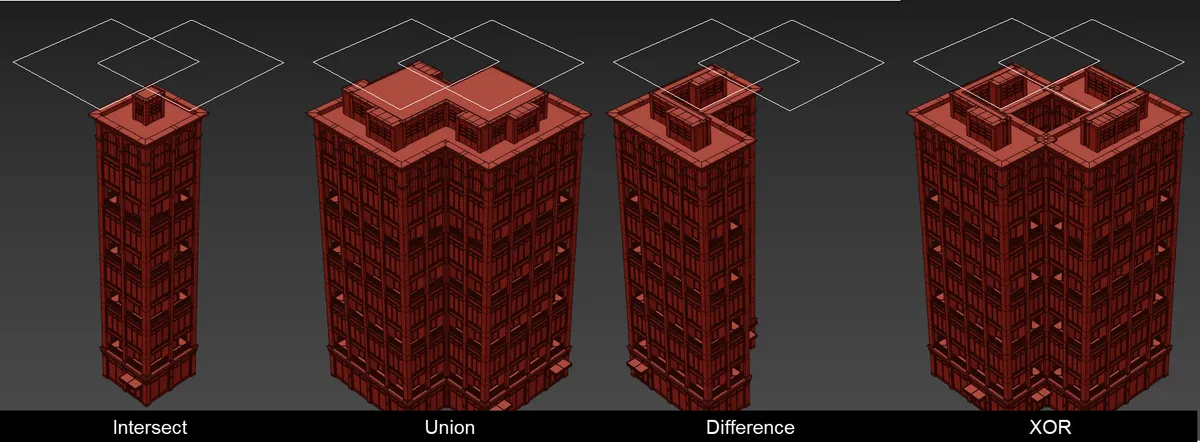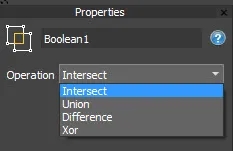Boolean
Overview
The Boolean operator allows users to perform set operations on two splines, combining them to create new paths based on their overlapping regions. This is useful for procedural modeling workflows where splines need to be merged, subtracted, or intersected dynamically.
Usage

- Add the Boolean Operator: Drag the Boolean node into the RailClone Style Editor.
- Connect Input Splines: Attach two spline inputs (Spline A and Spline B).
- Select an Operation: Choose the desired Boolean function from the dropdown:

- Intersect: Retains only overlapping regions between the two splines.
- Union: Merges both splines into a single shape.
- Difference: Retains regions covered by Spline A but removes those overlapping with Spline B.
- XOR (Exclusive OR): Keeps areas covered by either Spline A or Spline B, but removes overlapping sections.
- Continue Editing: Further modify the resulting spline using additional operators if needed.
Interface & Parameters
 Boolean Operator
Boolean OperatorOperation
Defines the type of Boolean operation applied:
- Intersect: Keeps only the overlapping areas of the two splines.
- Union: Merges both splines into a single unified shape.
- Difference: Subtracts Spline B from Spline A.
- XOR: Retains regions covered by one spline or the other, but not both.
Tips & Best Practices
- Ensure that input splines are clean and properly aligned for best results.
- Use in combination with the Filter by Mat.ID operator to control which sections of a spline participate in the Boolean operation.
- The Boolean operator is particularly useful for creating complex parametric shapes, such as procedural cutouts, merging boundaries, or generating enclosed regions dynamically.
- If unexpected results occur, check for overlapping spline vertices that might affect the Boolean operation.